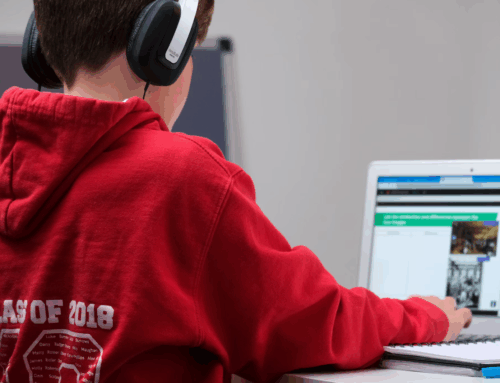 October 5 through 11 marked 2025’s National Banned Book Week, an annual awareness campaign that aims to celebrate our freedom to read by drawing attention to books that are banned in different schools and libraries. Banned books are those titles that have been removed or restricted from a library, library district, school, or school district due to challenges by patrons, parents, employees, or members of the public. While we picture banned books as being those titles censored nationwide, they are actually often only removed on an individual basis from select locations. However, with censorship gaining more traction politically, many titles are widely banned across many locations due to their content or themes. National Banned Book Week celebrates those titles that have some of the most challenges (the formal attempts to ban these books) or bannings.
October 5 through 11 marked 2025’s National Banned Book Week, an annual awareness campaign that aims to celebrate our freedom to read by drawing attention to books that are banned in different schools and libraries. Banned books are those titles that have been removed or restricted from a library, library district, school, or school district due to challenges by patrons, parents, employees, or members of the public. While we picture banned books as being those titles censored nationwide, they are actually often only removed on an individual basis from select locations. However, with censorship gaining more traction politically, many titles are widely banned across many locations due to their content or themes. National Banned Book Week celebrates those titles that have some of the most challenges (the formal attempts to ban these books) or bannings.
For instance, during the 2024-25 school year, at least 6,870 instances of book banning occurred in schools, affecting over 4,000 titles. These commonly banned books include childhood classics such as To Kill a Mockingbird by Harper Lee, Fahrenheit 451 by Ray Bradbury, Animal Farm by George Orwell, and even The Diary of a Young Girl by Anne Frank, with one of the most common reasons for its banning being that it is “too depressing” for students. Now, the tides are shifting toward banning books that are deemed inappropriate due to them containing themes of diversity, LGBTQIA+ representation, and inappropriateness. 2024’s highest contested book list from the American Library Association (ALA) includes Gender Queer by Maia Kobabe, The Bluest Eye by Toni Morrison, and The Perks of Being a Wallflower by Stephen Chbosky.
Although these book banners cite protecting children as the purpose of these bans, research has shown that diversity in literature improves learning. Having a diversity of experiences and cultures represented in school materials can . . .
- Increase engagement and self-efficacy: When students see their own backgrounds, cultures, and experiences reflected in their learning materials, they feel a greater sense of belonging and value, which increases their confidence and participation in class.[1]
- Boosts critical thinking and problem solving: Exposure to different viewpoints encourages students to analyze issues from multiple angles, leading to improved cognitive skills, critical thinking, and the ability to navigate complex problems.[2]
- Improves comprehension and adaptability: Students who can learn nuance and complexity in reading material are better able to see concepts from multiple perspectives, helping to develop empathy and flexibility. [3]
So, what counts as diversity in school materials? Having a diverse collection means having literature and other media that represent people from a range of different identities, including culture, ethnicity, age, gender, sexual orientation, and ability level.[4] However, simply having a diverse collection does not mean that students will reap the benefits; instead, educators should aim for inclusion, rather than simply adding diversity for a quota. This means that in addition to having these representations, they are also being utilized and included in classroom discussions, lessons, etc. Basically, diversity is the what and inclusion is the how.
It can be daunting for educators and librarians to not only ensure that they have a diverse collection of teaching resources, but also that this collection is being utilized in an inclusive way. A good starting point for those hoping to ensure that they are practicing both diversity and inclusion is to complete a classroom audit framed by both terms (see the sample audit provided below).
Inclusive Text & Media Audit Guide
1. Diversity vs. Inclusion Focus
Purpose: To assess what materials are present (diversity) and how they are being utilized (inclusion).[5]
Audit Actions
- Tally books and media by visible identity markers:
- Author identity
- Protagonist identity
- Setting
- Primary themes
- Record counts in a spreadsheet by category:
- Race/ethnicity
- Gender
- Ability
- Family structure
- Language
- Note how many titles depict people in:
- Everyday roles
- Aspirational roles
- Systemic-context roles (e.g., civic, academic, leadership)
- Apply Bishop’s “Mirrors, Windows, and Sliding Glass Doors” lens:
- Mirrors – Do students see themselves represented?
- Windows – Do they see others’ experiences?
- Sliding Glass Doors – Do they engage empathetically with other lives?
2. Instructional Use & Integration
Purpose: To determine whether diverse materials are meaningfully integrated into instruction.[6]
Audit Questions
- Who decides when and how these texts are taught?
- Are diverse texts taught in isolation (e.g., during heritage months) or integrated into core instruction?
- Do lesson plans invite critical reflection on power, context, and authenticity?
3. Quality & Authenticity Check
Purpose: To ensure that representation is accurate, nuanced, and respectful.[7]
Audit Criteria
- Avoid “diversity” that is stereotypical or surface level.
- Review author/illustrator backgrounds and community-based reviews for authenticity.
- Favor own-voices texts when possible.
- Use brief annotation notes in your inventory to mark quality concerns or representational strengths.
4. Accessibility & Availability
Purpose: To confirm equitable access to diverse materials.[8]
Audit Criteria
- Do all students have equitable take-home rights?
- Are there translations, read-aloud versions, large-print editions, and audiobooks available?
- Compare physical vs. digital availability and review loan policies for equity.
- Student Voice & Choice
Purpose: To gather direct feedback from students about representation and inclusion.[9]
Survey Questions
- Do you see yourself reflected in the class books?
- What would you like to read more of?
- Do you feel class discussions are respectful of all perspectives?
Ultimately, the goal of a diverse and inclusive classroom library is to create a richer, more engaging learning environment for every student. By moving beyond simply counting titles to instead thoughtfully integrating a wide range of voices into instruction, educators can foster greater empathy, critical thinking, and a true love of reading.
The provided sample audit guide offers a practical starting point for this important work. It’s a tool to help educators and librarians thoughtfully curate their collections and teaching practices, ensuring that all students can find themselves in the stories they read while also gaining a deeper understanding of the world around them.
In celebrating the freedom to read, we affirm our commitment to creating educational spaces where every student feels seen, valued, and equipped to explore the vast and diverse landscape of human experience through literature.
[1] https://education.purdue.edu/news/2024/01/01/curriculum-design-culturally-appropriate/
[2] https://www.stjohns.edu/news-media/johnnies-blog/diversity-5-ways-it-boosts-student-success#
[3] https://about.proquest.com/en/blog/2019/The-Value-of-Learning-from-Diverse-Perspectives/
[4] https://doi.org/10.1007/s00247-022-05356-0
[5] https://scenicregional.org/wp-content/uploads/2017/08/Mirrors-Windows-and-Sliding-Glass-Doors.pdf
[6] https://www.michigan.gov/-/media/Project/Websites/mde/Academic-Standards/Tools_Guidance_Eval_Bias_Instructional_Mats.pdf
[7] https://clelejournal.org/article-1-ethnicity-implied-author-reader/
[8] https://www.ala.org/advocacy/intfreedom/access
[9] https://www.edweek.org/teaching-learning/opinion-representation-matters-in-classroom-libraries/2020/06
Photo by Redd Francisco for Unsplash.




